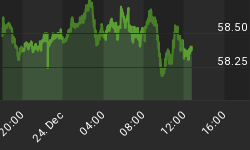Over the last four quarters, the stand-out losers against gold have been the world's top four reserve currencies...
The UPSHOT from last week's London Bullion Market Association conference in Berlin, at least for gold prices, was that there's more sound and fury about bullion in the financial pages than in the dealing rooms right now.
Several dealers I spoke to said business was quiet, if not boring. Gold's current rally, said one speaker, "punches above its weight in terms of significance." Another noted that at the start of September, when Dollar-gold surpassed its June high, volatility was at a 5-year low. (It still is. Silver price volatility has fallen to a 3-year low as it broke three-decade highs.)
You can see this lack of frenzy in prices alone, in fact - but only if you don't focus on the Dollar alone...

BullionVault's Global Gold Index shows the price of gold against the world's top 10 currencies, weighted by GDP.
Latest forecasts for economic growth from the IMF are applied for 2010, putting the US Dollar top, with the Euro next...then the Chinese Yuan...Japanese Yen...British Pound....Russian Rouble...Brazilian Real...Canadian Dollar...Indian Rupee...and Mexican Peso.
And just in case you were wondering, three points stand out from the last 3 months' action:
- Gold's bull-market pattern against all the world's money continued in Q3 (July's low was higher than the previous bottom in March);
- Q3 marked the 33rd positive quarter of the 43 since Jan. 2000, but only just. The GGI rose to 422 from 421 (New Year 2000 = 100);
- Most notably, gold's 5% gain vs. the Dollar was its strongest rise against any currency.
That third point is only to be expected, perhaps. Because the Dollar's decline made headlines across the summer/start of fall. But crunching the numbers further again, two truly remarkable points jump out from there...
#1. July-Sept this year was only the third quarter since the start of 2000 when the Dollar was the weakest major currency against gold. (The currency most commonly bottom-of-the-heap has been the Brazilian Real, but it's not been worst-in-show since 2005.) The USD was previously in the dog-house during Q4 2004 and Q3 2007 - periods when, just as over the last 3 months, US central-bank policy stood out as deliberately weakening the Dollar compared with its paper alternatives;
#2. Over the last four quarters (starting Oct. 2009), the stand-out losers against gold have been the world's top four reserve currencies:
- Q4 2009 - gold rose 13.5% versus the Yen (which accounts for 3.3% of central-bank reserves, by Dollar value, worldwide);
- Q1 2010 - gold rose 9.3% against the British Pound (4.2% of world reserves);
- Q2 2010 - gold rose more than 23% in terms of the Euro (26.5%);
- Q3 2010 - as we just saw, gold rose fastest against the US Dollar (62.1%).
Yes, the world's most reservable currencies have topped the bottom of the league-table against gold for the last four quarters running - and in reverse order of reservability, too!
Again, this countdown shouldn't surprise us, perhaps. Because while the US, Eurozone, UK and Japan now account for 97.9% of officially reported FX reserves worldwide, they've seen little reason not to abuse that demand, slashing interest rates further than any lesser currency-issuer could dare (0%, 1.0%, 0.5% and 0.1% respectively). And oddly enough, emerging-market central banks have been reducing the Big Four's weighting in their reported reserves right alongside, actually nudging it below the "advanced economies" weighting of USD, EUR, GBP and JPY since the start of last year.
Gold bullion, of course, pays nothing in interest. But that zero-yield is no longer a handicap against the world's most heavily-owned paper money. Little wonder it's getting a strong bid in the market, most of all against those same, heavily-owned paper currencies.
















